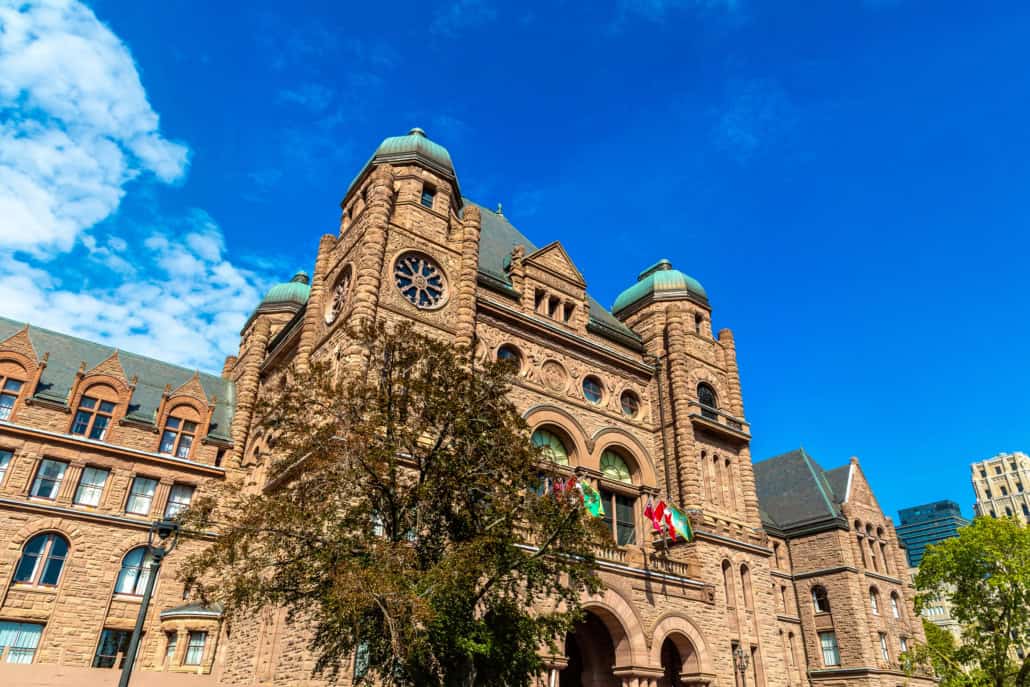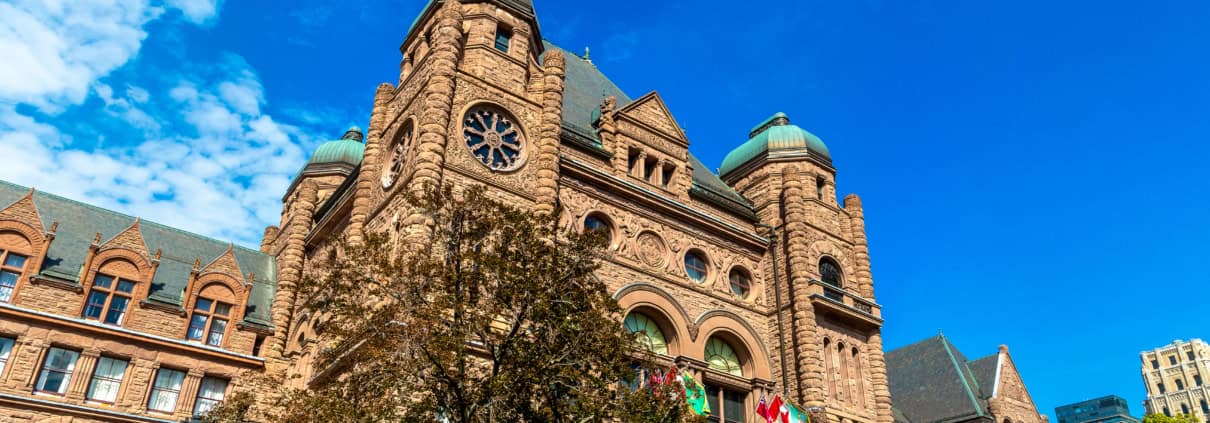2025 Ontario Budget features tariff relief and a deficit nearly 10x greater than expected

Ontario Premier Doug Ford has been the first minister most visibly and vocally opposed to U.S. President Donald Trump’s tariff program. Ford has continually done the rounds on U.S. cable TV, making the case for continued economic cooperation between our two countries and warning of the cross-border economic implications of a trade war. He promised that Budget 2025 would be designed to protect Ontario from any tariff-related fallout.
Right on cue, the $232.5 billion budget painted a clear picture of the havoc that tariffs on goods such as automobiles, steel and aluminum tariffs—along with widespread business and investment uncertainty—are projected to wreak on the province’s fiscal well-being.
“We have a plan to protect workers, businesses and communities from U.S. tariffs and the economic uncertainty they have caused over the past weeks and months,” Peter Bethlenfalvy, Ontario’s Minister of Finance, said in tabling the budget. “We need to make bold, lasting change that makes Ontario the most competitive economy in the G7 to invest, create jobs and do business … And we will do this while remaining fiscally responsible with a path to balance.”
That last statement may come under scrutiny in the days ahead. Budget 2025 projects whopping deficits of $14.6 billion in 2025–26, $7.8 billion in 2026–27 and a tiny surplus of $200 million in 2027–28. That’s a far cry from the $1.5 billion deficit projected for 2025–26 in last year’s Fall Economic Statement, with a $900 million surplus forecast for 2026-27. Apart from a lower-than-expected $6.0 billion budget overshoot for 2024-25, it’s clear that tariff disruption has blown a hole in last year’s sunny fiscal projections. At the same time, the province’s net debt-to-GDP ratio is projected at 37.9 per cent for 2025–26, increasing to 38.9 per cent in 2026–27 and 38.6 per cent in 2027–28.
Growth is forecast to be limited in the coming years. Ontario’s real GDP is projected to rise by 0.8 per cent in 2025, 1.0 per cent in 2026 and 1.9 per cent in 2027 and 2028. Those projections depend heavily upon some form of trade détente with the U.S. An impromptu imposition of across-the-board tariffs, for example, could easily push the province’s growth forecasts into the red. It’s worth noting that in the Fall Economic Statement, growth was projected to reach 1.7 per cent in 2025 and 2.3 per cent in 2026 and 2027.
To buttress against economic uncertainty and protect Ontario companies, Budget 2025 proposes the creation of a new $5 billion Protecting Ontario Account “… to provide businesses with critical support to protect jobs, transform businesses and grow strategic sectors of the economy that are facing significant tariff-related business disruptions.” The fund is intended to provide liquidity relief to businesses if credit markets tighten.
Some of the other key highlights of Budget 2025 include proposals* to:
- Enhance and expand the Ontario Made Manufacturing Investment Tax Credit by temporarily increasing “… the tax credit rate for Canadian-controlled private corporations (CCPCs) from 10 per cent to 15 per cent and temporarily expand eligibility to a 15 per cent non-refundable version of the credit to non-CCPCs, including public corporations, that make eligible investments in the province.”
- Defer several provincially administered business taxes for six months from April 1, 2025, to October 1, 2025
- Provide Workplace Safety and Insurance Board rebates of $4 billion and premium rate reductions to qualifying employers beginning in 2025
- Deliver an additional $15 million for the renewal of the Life Sciences Innovation Fund for three years beginning in 2025–26
- Provide $35 million in annual support between 2025–26 and until 2029–30 for grape farmers and wineries through a new Ontario Grape Support Program
- Provide $84 million in annual support for VQA wine producers through the VQA Wine Support Program
- Spend $500 million for a new Critical Minerals Processing Fund to boost mineral production across the province
- Invest an additional $5 billion for the Building Ontario Fund, $600 million for the Invest Ontario Fund, $90 million in venture capital funding through Venture Ontario and $50 million over three years starting in 2025–26 to create the Ontario Together Trade Fund, which is designed to help fund the expansion of interprovincial trade
- Allocate $200 million for a new Ontario Shipbuilding Grant Program to boost shipbuilding in the province
- Triple loan guarantees to $3 billion through the Indigenous Opportunities Financing Program, while providing $70 million over four years for the Indigenous Participation Fund starting in 2025–26 and $10 million over three years for new scholarships to help First Nations postsecondary students pursue careers in resource development
- Make the provincial gas and fuel tax cuts permanent
- Spend $1 billion over three years for the Skills Development Fund Capital and Training Streams to fund the training of skilled workers, along with $50 million in 2025–26 to support vocational and skills training
- Create a new Trade-Impacted Communities Program that will provide up to $40 million in grants, beginning in 2025–26, to help communities respond to trade disruptions, along with $20 million in 2025–26 for new training centres to support laid-off workers, including those impacted by U.S. tariffs
- Offer an additional $400 million for the Municipal Housing Infrastructure Program and Housing-Enabling Water Systems Fund
- Provide approximately $56 billion over 10 years for health infrastructure, including more than $43 billion in capital grants
- Spend $280 million over two years to expand Integrated Community Health Service Centres that provide services such as MRI and CT scans, endoscopy procedures and orthopedic surgeries
- Budget $235 million in 2025–26 for up to 80 additional primary care teams across the province
- Introduce an Ontario Fertility Treatment Tax Credit, a refundable tax credit that would provide support of as much as 25 per cent of eligible fertility treatment expenses up to $20,000, for a maximum credit of $5,000 per year
- Deliver an additional $207 million over three years starting in 2025–26 for the Ontario Research Fund
- Allocate more than $30 billion over 10 years for school repairs, maintenance and modernization
- Enact a permanent removal of tolls from Highway 407 East
- Pass a reduction of the spirits basic tax from 61.5 per cent to 30.75 per cent, along with a reduction of the beer basic tax rate that apply to Ontario microbrewers from 35.96 cents per litre to 17.98 cents per litre for draft beer and from 39.75 cents per litre to 19.88 cents per litre for non-draft beer. Both changes would take effect on August 1st, 2025
- Reduce the mark-up rates for cider from 60.6 per cent to 32.0 per cent, on spirit- and wine-based ready-to drink beverages from 60.6/64.6 per cent to 48 per cent and on “spirit-based RTDs that do not have an ABV content of greater than 7.1 per cent … from 68.5/96.7 per cent to 48 per cent.” These changes would take effect on August 1st, 2025
*Note: Several of the proposed measures in Budget 2025 were announced in the preceding weeks
What a difference seven months and an election (both in Ontario and the U.S.) makes. A Fall Economic Statement that sold fiscal security and $200 rebate cheques has been replaced by a budget that spends heavily on programs for business and infrastructure and takes a cross-your-fingers approach to fiscal forecasting.
The government is showing a willingness to spend in support of businesses and to stimulate the economy as needed. That’s the good news. On the other hand, any proposed aid may need to be substantially greater if auto plants continue cutting shifts, investors look elsewhere for opportunities and Ontario companies relocate South of the Border to bypass potential tariff threats.
And if a certain mercurial U.S. president decides to play hardball during a future Canada-U.S.-Mexico Agreement renegotiation, all bets are off.
Armando Iannuzzi, Co-Managing Partner
For more information on measures announced in Ontario’s 2025 Budget, contact a member of the KRP LLP team today.


